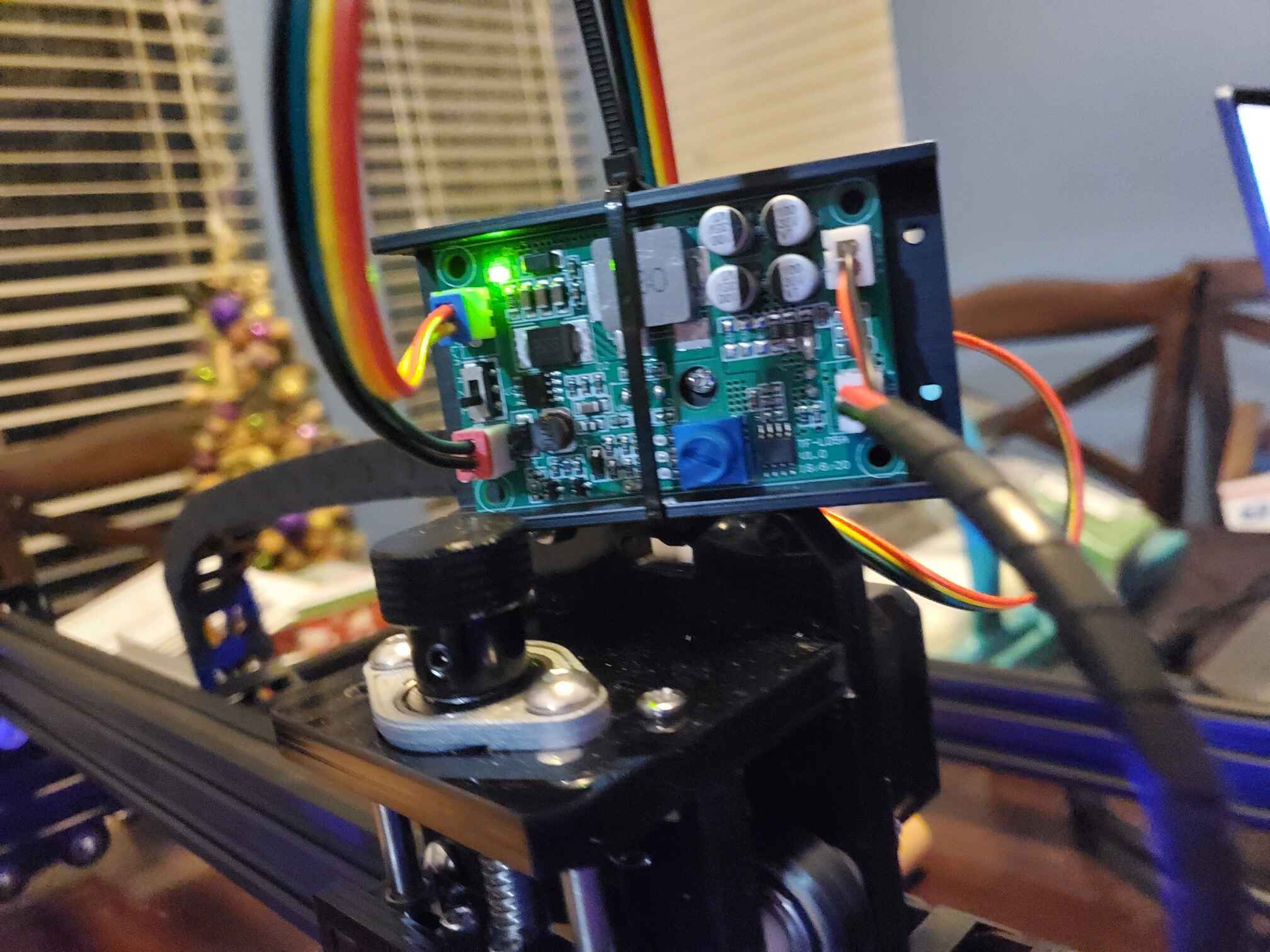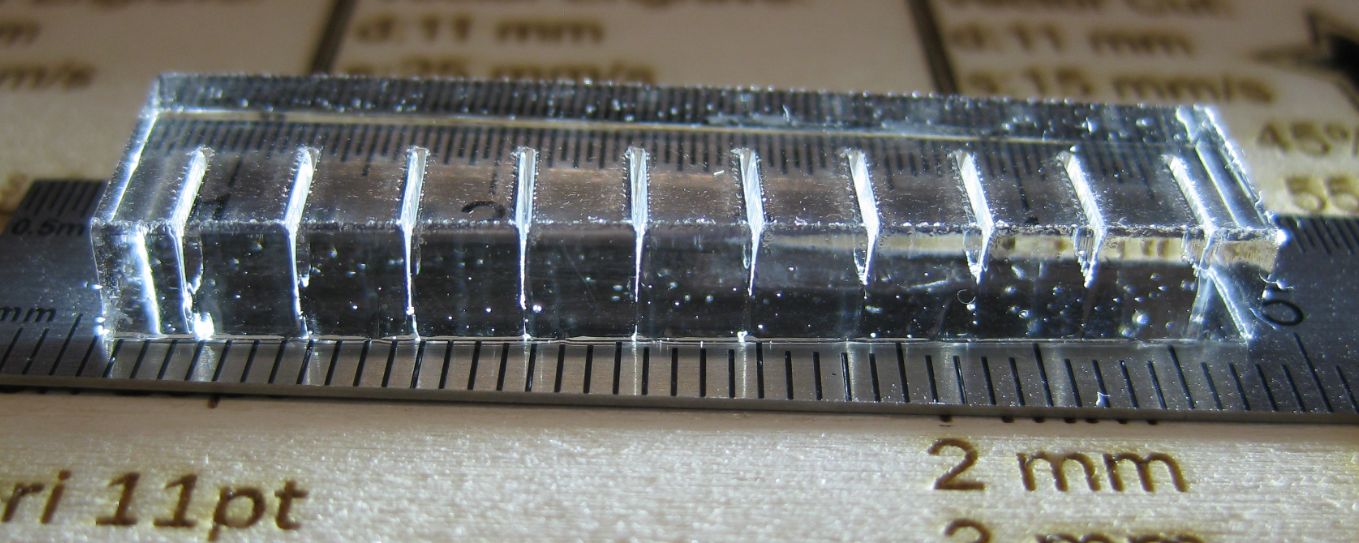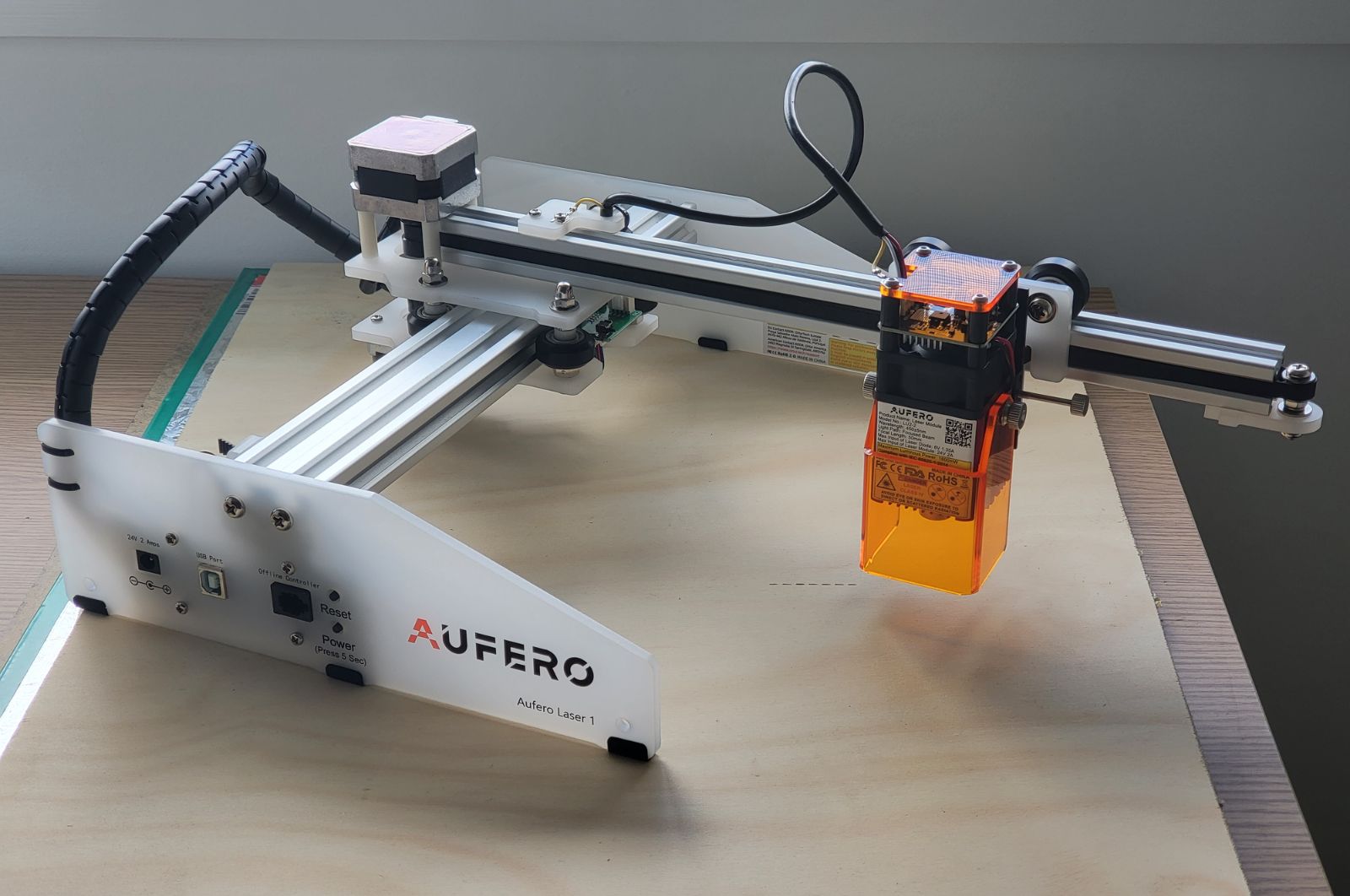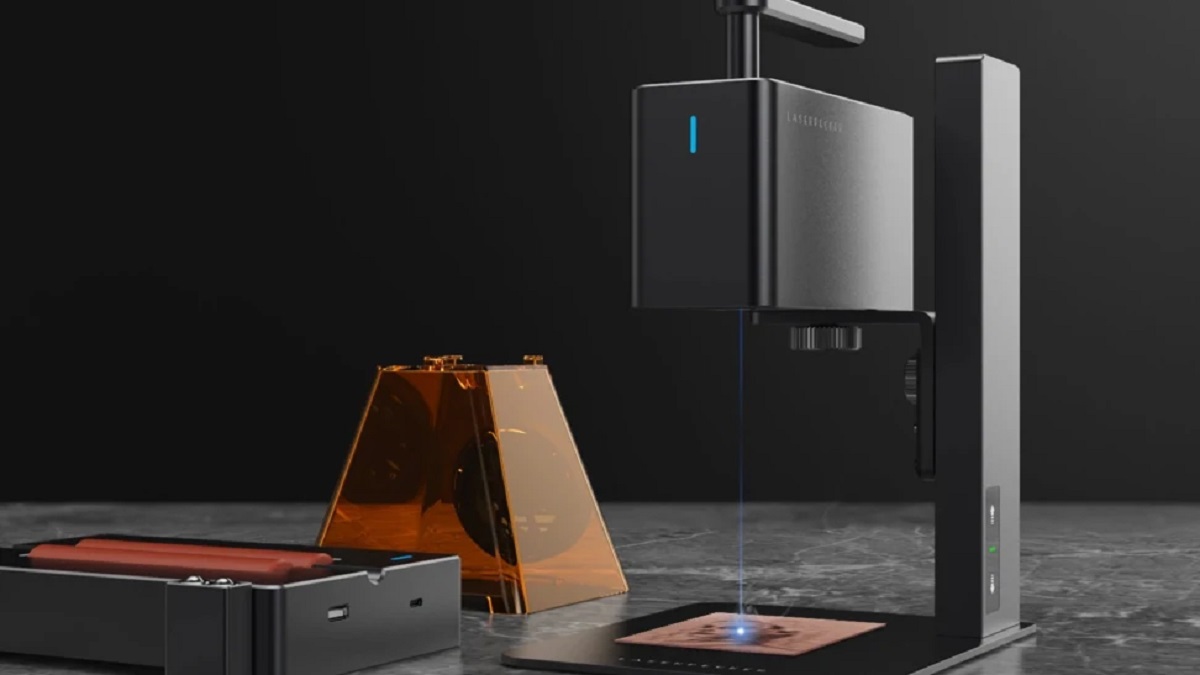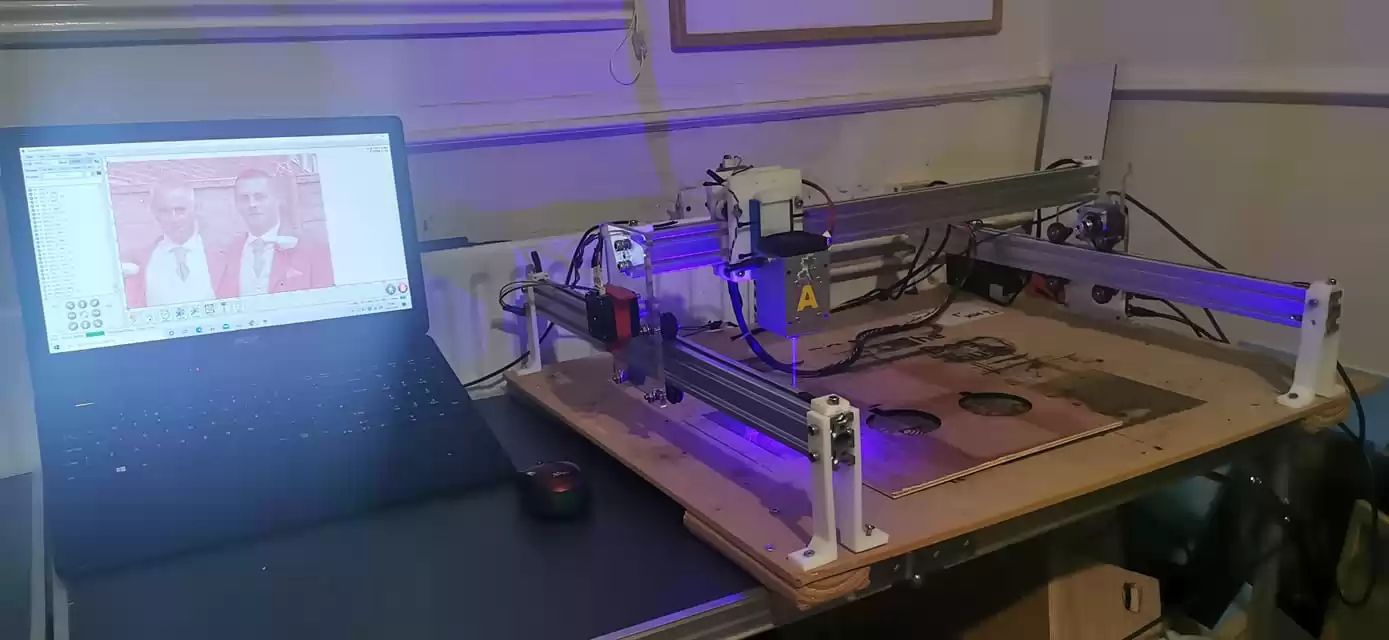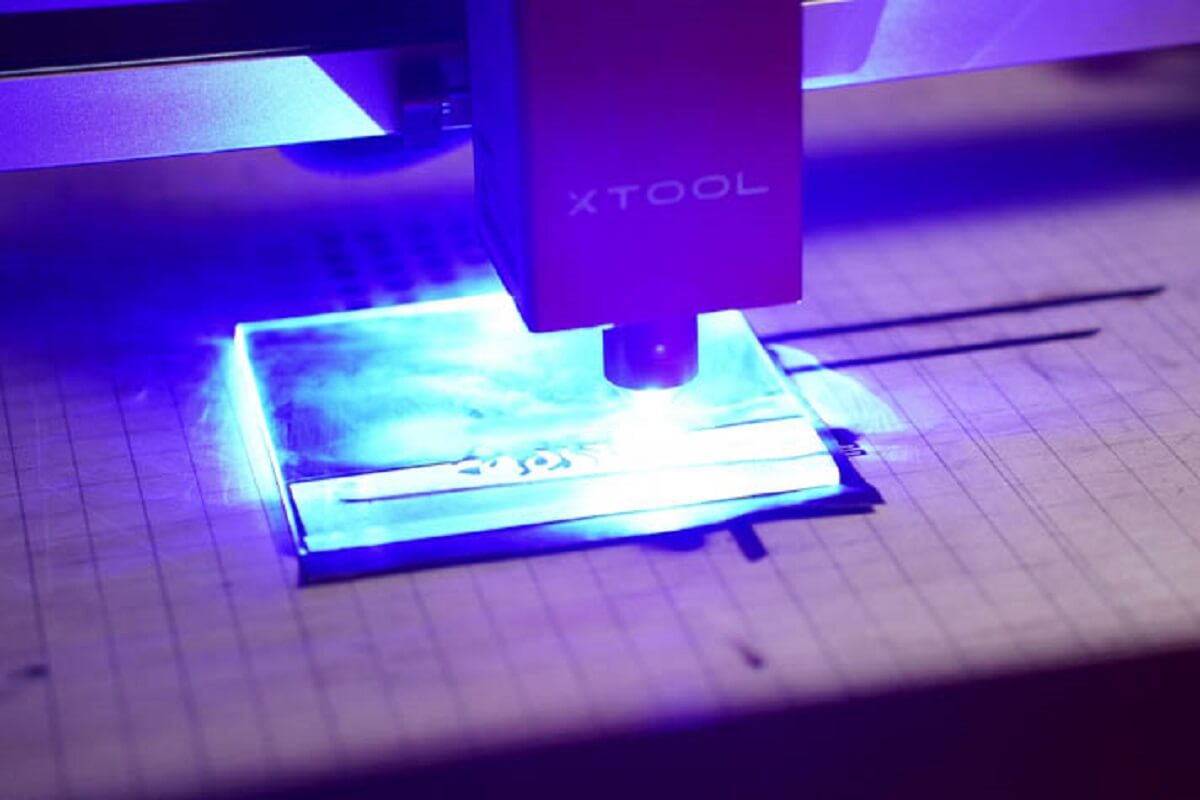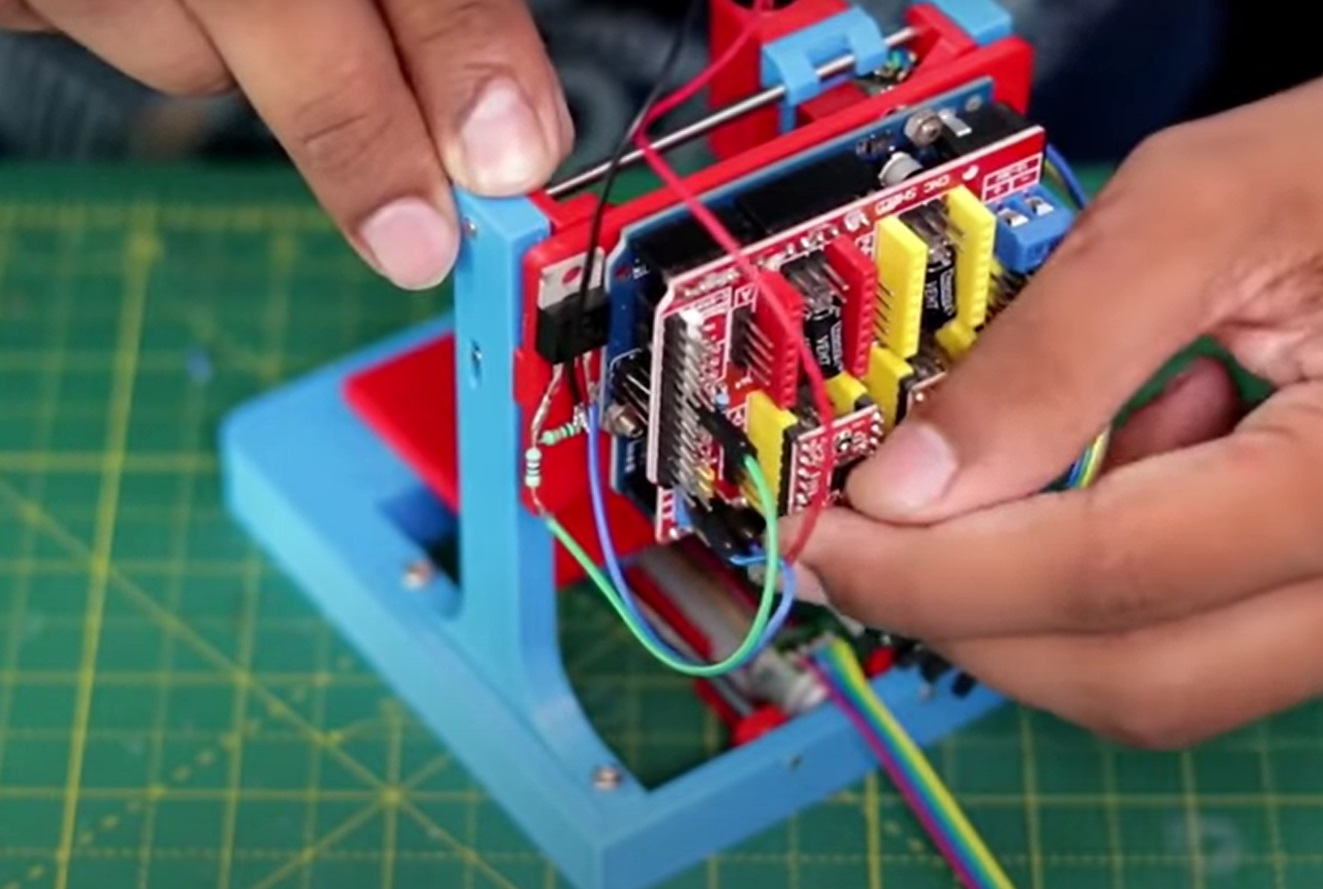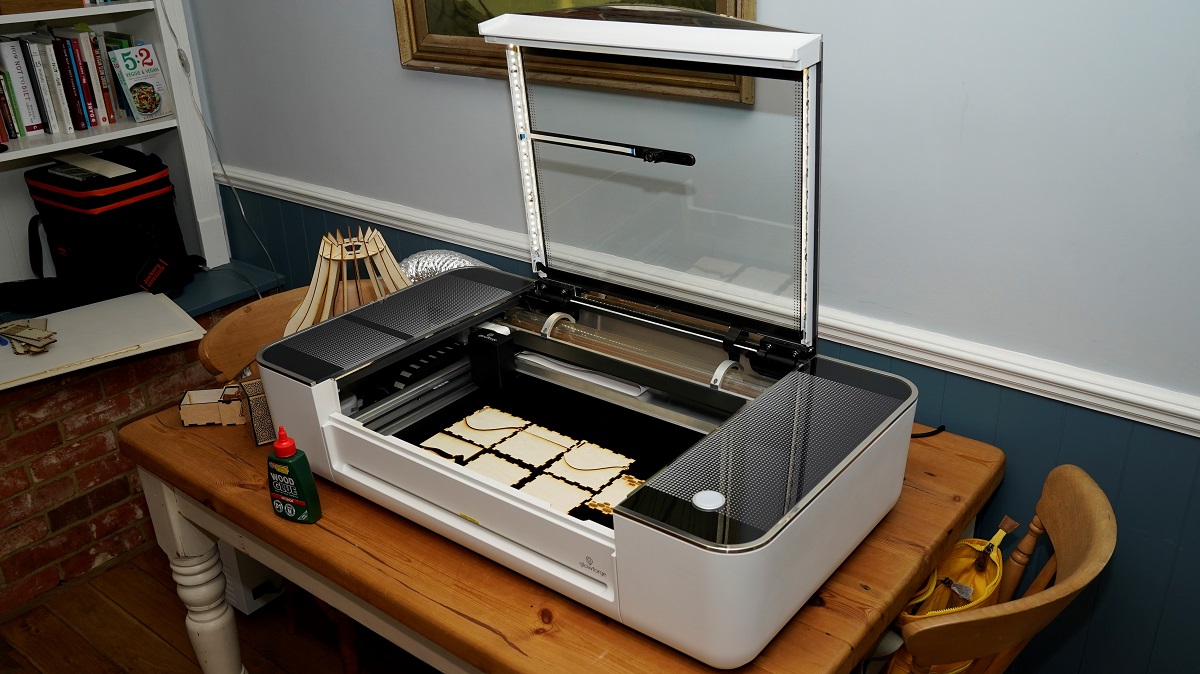Introduction
Choosing a laser engraver can be an exciting but daunting task. With numerous options available in the market, it’s crucial to make an informed decision that aligns with your needs and budget. A laser engraver is a versatile tool that can add a personal touch to various materials, including wood, acrylic, leather, and more. Whether you’re an artist, hobbyist, or entrepreneur, investing in the right laser engraver can significantly enhance your creativity and productivity.
When embarking on the journey of choosing a laser engraver, there are several factors to consider. This comprehensive guide will provide you with the essential information and key considerations to ensure you make the right choice.
Before diving into the details, it’s important to understand the importance of budgeting. Establishing a realistic budget will help narrow down your options and avoid overspending. Determine how much you’re willing to invest in a laser engraver and research models that fall within your price range.
Another crucial factor to consider is the material compatibility of the laser engraver. Different engravers are designed to work with specific materials, so it’s essential to choose one that aligns with your project requirements. Whether you plan to engrave wood, metal, or fabric, ensure that the laser engraver can handle the material effectively and produce high-quality results.
The laser power of an engraver is an important consideration, as it determines the depth and speed of the engraving. Higher laser power allows for quicker and deeper engravings, while lower power may be suitable for finer details. Consider the type of projects you’ll be working on and select a laser engraver with an appropriate power output.
The size of the engraving area is another vital aspect to consider. Engravers come in various sizes, and choosing one that matches your project needs is important. Larger engraving areas allow you to work on bigger materials or multiple items simultaneously.
The software compatibility of a laser engraver is essential for a seamless user experience. Ensure that the engraver you choose is compatible with the software you plan to use. Some engravers have proprietary software, while others are compatible with popular design programs such as Adobe Illustrator or CorelDRAW.
A cooling system is another important consideration, as lasers generate heat during operation. Look for an engraver with an efficient cooling system to prevent overheating and ensure prolonged durability.
Safety features should never be overlooked when choosing a laser engraver. Look for models with features such as enclosed working areas, emergency stop buttons, and protective eyewear to ensure a safe working environment.
Maintenance and support are crucial aspects to consider, as regular maintenance is necessary to keep your laser engraver functioning optimally. Look for models with readily available spare parts and reliable customer support in case you encounter any issues.
Finally, reading user reviews and testimonials can provide valuable insights into the performance and reliability of different laser engravers. Pay attention to feedback regarding ease of use, reliability, and overall satisfaction to make an informed decision.
By considering these factors and conducting thorough research, you can confidently choose a laser engraver that meets your needs and helps you achieve outstanding engraving results. The next sections will dive deeper into the different aspects mentioned above to provide you with a comprehensive understanding of what to look for when choosing a laser engraver.
Budget
When it comes to choosing a laser engraver, setting a budget is a crucial first step. Determining how much you’re willing to invest will help streamline your options and prevent overspending. Laser engravers vary in price based on their capabilities, power output, and additional features.
Entry-level laser engravers typically range from $200 to $500. These models are suitable for hobbyists and beginners who don’t require high power or large engraving areas. They are generally compact and may have limitations when it comes to material compatibility and engraving speed.
Mid-range engravers usually fall within the $500 to $2000 price range. They offer a balance between affordability and functionality, making them suitable for small businesses, artisans, and professionals. These engravers often have higher laser power, larger engraving areas, and improved compatibility with various materials.
High-end laser engravers can cost upwards of $2000, but they offer advanced features, exceptional engraving quality, and larger engraving areas. These engravers are ideal for commercial use, where precision and speed are of utmost importance.
It’s important to consider your intended use and budgetary constraints when selecting a laser engraver. While high-end models may seem tempting, they might not be necessary if you only plan to work on small projects or have a limited budget. Similarly, investing in a low-budget engraver might lead to frustrations and limitations if you have larger-scale projects in mind.
Aside from the initial purchase cost, it’s essential to consider ongoing expenses such as replacement parts, maintenance, and accessories. Some laser engravers require specific consumables, such as laser tubes or lenses, which may add to the operational costs over time. Researching the availability and cost of these items is vital to ensure long-term affordability.
Keep in mind that while it can be tempting to opt for the cheapest option available, quality should not be compromised. Research and read reviews from other users to get a sense of the overall performance and reliability of different models within your budget range.
Ultimately, finding the right balance between affordability and functionality is key when considering your budget for a laser engraver. By understanding your needs and doing thorough research, you can make a well-informed decision that brings value to your projects without breaking the bank.
Material Compatibility
One of the critical factors to consider when choosing a laser engraver is its compatibility with different materials. Laser engravers are designed to work with specific types of materials, and selecting the right one ensures optimal engraving results.
Wood is one of the most common materials worked on with laser engravers. From intricate designs on furniture to personalized wooden signs, the engraver should be capable of handling various types of wood, including hardwoods and softwoods. Ensure that the laser power is appropriate for the density of the wood you plan to engrave.
Acrylic is another popular material used in laser engraving. It provides a translucent and glossy finish, making it ideal for creating signage, displays, and personalized gifts. Look for an engraver that has a focused laser beam for crisp engraving on acrylic surfaces.
Leather engraving allows for intricate patterns and designs on wallets, belts, and other leather accessories. The laser engraver should be compatible with leather and offer precise control to achieve the desired depth and level of detail without damaging the material.
Metal engraving requires a laser engraver with high power and specific settings for engraving on different types of metals. While some engravers can work on softer metals like aluminum or brass, others are designed for engraving on harder metals such as stainless steel. Ensure that the engraver you choose has the necessary power and settings for the type of metal engraving you plan to do.
Glass engraving is a delicate process that requires a laser engraver with specific settings and a controlled heat source. Not all engravers can engrave on glass, so if you’re interested in this type of engraving, be sure to choose a model that is compatible with glass surfaces.
Fabric engraving has gained popularity in the fashion and textile industry. Whether it’s customizing t-shirts, bags, or other fabric items, the laser engraver should have the option for engraving fabric without causing burns or damage. Look for an engraver with adjustable laser power and accurate control over the engraving process.
When considering material compatibility, it’s important to research and review the specifications provided by the manufacturer. Look for information on the recommended materials and settings for each type of engraving. Additionally, reading user reviews and testimonials can provide insights into the actual performance and results achieved with different materials.
By ensuring that the laser engraver is compatible with the materials you plan to work with, you can confidently create high-quality engravings and expand your creative possibilities.
Laser Power
The laser power of a laser engraver plays a crucial role in determining the depth and speed of the engraving process. It is an important consideration when choosing a laser engraver that aligns with your project requirements.
Higher laser power allows for quicker and deeper engravings. This is particularly useful when working on materials that require greater precision and depth, such as metal or thick acrylic. With higher power, you can achieve faster engraving speeds and more pronounced engraving depths.
Lower laser power, on the other hand, may be suitable for finer details and engraving on delicate materials. It is essential for materials like leather or fabric, where heat control is crucial to prevent burning or damaging the material. Lower power also helps achieve intricate detailing in engraving designs.
The laser power of an engraver is typically measured in watts (W) and can range from as low as 5W to over 100W for commercial-grade machines. The power requirement largely depends on the type of materials you plan to work with and the level of detail you want to achieve.
It’s important to note that higher laser power often comes with a higher price tag. If your projects primarily involve engraving on softer materials like wood or acrylic, a lower laser power engraver might be sufficient. However, if you intend to work with harder materials or require faster engraving speeds, investing in a higher laser power engraver may be necessary.
When considering laser power, it’s crucial to strike the right balance between your specific project requirements and your budget. Carefully assess the types of materials you plan to work with and the level of detail and speed you need to achieve. Consider consulting with experts or professionals in the field to get advice on the appropriate laser power for your specific applications.
Additionally, keep in mind that laser power is not the only factor that affects the quality of engraving. Other factors, such as the focus of the laser beam, quality of optics, and software controls, also play a significant role. Therefore, it’s essential to consider these factors in conjunction with laser power to ensure optimal engraving results.
By understanding the laser power requirements for your projects and balancing it with your budget considerations, you can make an informed decision and choose a laser engraver that meets your specific needs.
Engraving Area
The engraving area of a laser engraver refers to the size of the workspace in which you can engrave your materials. It is an important factor to consider when choosing a laser engraver, as it determines the maximum dimensions of the items you can work with.
The size of the engraving area varies among different laser engraver models. Entry-level engravers may have smaller engraving areas, typically ranging from 8 inches by 8 inches to 12 inches by 12 inches. These models are suitable for smaller projects and hobbyist use.
If you require a larger engraving area, there are mid-range and high-end engraver models available. These models may have engraving areas ranging from 12 inches by 18 inches to 24 inches by 36 inches or even larger. They are ideal for professionals, small businesses, and those working on larger-scale projects.
When considering the engraving area, it’s important to assess your specific needs and the size of the materials you plan to work with. If you primarily work with smaller items, such as jewelry or small accessories, a smaller engraving area might be sufficient. However, if you plan to engrave larger objects like signs or furniture, a larger engraving area will be necessary.
It’s important to note that the physical size of the engraving area may not necessarily be the same as the maximum size of the material that can be placed inside the laser engraver. The size of the entrance or opening of the engraver needs to be considered as well. Ensure that the size of the engraving area and the entrance align with your project requirements.
When selecting a laser engraver with the appropriate engraving area, consider future scalability as well. If you anticipate working on larger projects in the future, it may be worth investing in a larger engraving area than you currently need.
Lastly, keep in mind that larger engraving areas generally come at a higher cost. Therefore, it’s important to find a balance between your project needs and your budget considerations. It’s also important to consider the overall machine size, as larger engraving areas may require more workspace in your studio or workshop.
By carefully considering the appropriate engraving area based on your specific needs and project requirements, you can choose a laser engraver that allows you to work efficiently and comfortably on your desired materials.
Software
The software used with a laser engraver is a vital component that allows you to create and control the design and engraving process. When choosing a laser engraver, it’s important to consider the software compatibility and functionality to ensure a smooth and efficient workflow.
Different laser engravers come with different software options. Some engravers have proprietary software that is specifically developed for their machines. These software packages are often designed with user-friendly interfaces and intuitive controls, making them accessible to beginners and hobbyists.
Other laser engravers are compatible with popular design programs such as Adobe Illustrator, CorelDRAW, or AutoCAD. This allows users to leverage their existing design skills and utilize the full range of features and tools provided by these powerful design software.
When considering the software, it’s important to assess your own familiarity and comfort level with design software. If you are a beginner and prefer simplicity and ease of use, a laser engraver with proprietary software may be a better choice. On the other hand, if you have experience with design software or plan to create intricate designs, a laser engraver compatible with popular design programs may be the ideal option.
Besides compatibility, it’s also important to consider the functionality and features provided by the software. Look for software that allows you to import various file formats, such as JPEG, PNG, and DXF, to ensure flexibility in working with different design files.
Additionally, consider features such as the ability to adjust laser power, control engraving speed, and create vector outlines from raster images. These features can enhance your control and precision during the engraving process.
Furthermore, some software packages offer additional features like image editing tools, text manipulation, and the ability to save and organize design files. These features can streamline your workflow and enhance your creativity.
When selecting a laser engraver, it’s crucial to ensure that the software is compatible with your computer’s operating system. Check the system requirements of the software and ensure that it can run smoothly on your computer without any compatibility issues.
Ultimately, the software used with a laser engraver is an essential aspect of the overall user experience. It affects your ability to create and control the engraving process. By considering compatibility, functionality, and your own familiarity with design software, you can choose a laser engraver with software that meets your needs and allows you to unlock your creativity.
Cooling System
Adequate cooling is essential for the proper operation and longevity of a laser engraver. The laser generates heat during the engraving process, and without a reliable cooling system, the machine can overheat and cause performance issues or even damage.
When choosing a laser engraver, it’s crucial to consider the type of cooling system it utilizes. There are two common types of cooling systems: air-cooled and water-cooled.
Air-cooled systems use fans or compressed air to dissipate heat generated by the laser tube. These systems are generally less expensive and easier to maintain. However, they are typically suitable for lower-power engravers and may struggle to maintain optimal temperature control during prolonged engraving sessions or in high-temperature environments.
Water-cooled systems, on the other hand, use a water circulation system to regulate the temperature of the laser tube. Water absorbs heat more efficiently than air, providing better cooling capabilities. Water-cooled systems are often preferred for higher-power engravers or continuous heavy-duty usage. They offer more consistent cooling and can operate for longer periods without overheating.
It’s important to note that water-cooled systems require additional maintenance, such as regular cleaning and refilling of the water reservoir. The water quality is also crucial for the longevity of the laser tube, as impurities or minerals in the water can cause deposits or corrosion. Therefore, it’s essential to use clean and distilled water to minimize the risk of damage.
Another consideration regarding cooling systems is noise. Air-cooled systems are generally quieter compared to water-cooled systems, as they rely on fans rather than water pumps. If noise is a concern for your working environment, it may be worth considering an air-cooled engraver.
When assessing the cooling system, it’s essential to refer to the manufacturer’s specifications and recommendations. Ensure that the cooling system is suitable for the power output of the laser engraver and the materials you plan to work with. Some materials may require longer engraving sessions, which can put extra strain on the cooling system. Additionally, consider environmental factors such as ambient temperature and humidity, as they can also affect the performance of the cooling system.
Overall, a reliable cooling system is crucial for maintaining the performance and lifespan of your laser engraver. By understanding the different types of cooling systems available and their suitability for your specific needs, you can choose a laser engraver with an efficient cooling system that ensures optimal performance and longevity.
Safety Features
When it comes to laser engravers, safety should be a top priority. Laser engraving involves high-powered lasers that can be potentially hazardous if not used correctly. Therefore, it’s important to choose a laser engraver that incorporates essential safety features to ensure a safe working environment.
One of the key safety features to look for is an enclosed working area. This prevents direct exposure to the laser beam and minimizes the risk of accidental eye or skin injuries. An enclosure also helps contain any smoke or fumes emitted during the engraving process, promoting better air quality in your workspace.
Emergency stop buttons or kill switches are another critical safety feature. These buttons allow you to quickly and easily stop the engraver’s operation in case of any unexpected issues or emergencies. Having easy access to an emergency stop button can prevent accidents or injuries from escalating.
Protective eyewear is essential when working with laser engravers. The laser beam emitted during the engraving process can be harmful to the eyes. Therefore, a laser engraver should come with appropriate protective eyewear, such as laser safety glasses or goggles, that can effectively filter out the laser radiation.
Many laser engravers also incorporate safety interlocks. These interlocks ensure that the laser operates only when the enclosure is securely closed. It prevents accidental exposure to the laser beam and minimizes the risk of injuries.
Some engravers offer temperature sensors that can detect overheating issues or abnormal heat levels. In the event of overheating, the engraver may have automatic shutdown or cooling features to prevent damage to the machine or potential fire hazards.
User-friendly and intuitive control panels are also important safety features. Clear and easy-to-understand buttons or touchscreens allows for quick and efficient control of the engraver’s settings, reducing the chances of operating errors that may lead to accidents.
It’s crucial to thoroughly review the safety features provided by the manufacturer. Understand how each feature works and determine if it aligns with your safety requirements. Additionally, it’s recommended to follow all safety guidelines and instructions provided by the manufacturer and use the engraver in a well-ventilated area.
Lastly, it’s important to take note that while safety features can significantly reduce risks, it’s essential to always exercise caution and practice proper laser safety techniques. This includes using personal protective equipment, keeping the working area clear, and being mindful of potential hazards.
By selecting a laser engraver that incorporates comprehensive safety features, you can ensure a secure working environment and minimize the risks associated with laser engraving.
Maintenance and Support
Maintenance and support are crucial considerations when choosing a laser engraver, as they ensure the smooth operation and longevity of the machine. It’s important to select a laser engraver that is not only reliable but also backed by reliable customer support and accessible maintenance resources.
Regular maintenance is necessary to keep your laser engraver functioning optimally. It’s important to inquire about the maintenance requirements and schedules provided by the manufacturer. Some engravers may require routine cleaning or calibration, while others may have specific maintenance tasks related to the cooling system or optics.
Research the availability of spare parts and consumables for the laser engraver. This includes components such as laser tubes, lenses, and mirrors. It’s important to ensure that these parts are readily available when needed, as delays in obtaining replacement parts can cause downtime and interruptions to your workflow.
Customer support is another crucial aspect to consider. A reputable and responsive customer support team can provide assistance when facing technical issues or operational challenges with your laser engraver. Be sure to check if the manufacturer offers reliable customer support through various channels, such as phone, email, or live chat.
Furthermore, it’s beneficial to read reviews and testimonials from other users to gauge their experiences with the manufacturer’s support and the ease of obtaining assistance or resolving issues. Positive feedback regarding prompt response times and helpfulness of customer support can be indicators of a reliable manufacturer.
Training and educational resources are also important aspects to consider. Look for manufacturers that provide comprehensive user manuals, tutorials, or online resources to help you fully understand and utilize the capabilities of the laser engraver effectively. This can be especially helpful if you are new to laser engraving or want to expand your skills.
Additionally, consider warranties offered by the manufacturer. A warranty provides peace of mind and protection against potential defects or malfunctions in the engraver. Understand the terms and duration of the warranty and what it covers, such as parts and labor.
By choosing a laser engraver that comes with accessible maintenance resources and reliable customer support, you can ensure ongoing assistance and minimize downtime. Regular maintenance and prompt support can help you address any issues that arise and keep your engraver operating at its best.
User Reviews
When searching for a laser engraver, user reviews can provide valuable insights into the performance, reliability, and overall satisfaction of different models. Reading user reviews allows you to gain a better understanding of the real-world experiences of other individuals who have used the engravers.
User reviews often cover various aspects of the laser engraver, including its ease of use, engraving quality, software compatibility, and customer support. These firsthand experiences can help you assess whether the laser engraver meets your specific needs and expectations.
Pay attention to the overall rating or average score given by users. This provides a general indication of the satisfaction level. However, it’s also important to read individual reviews and understand the specific strengths and weaknesses mentioned.
Look for reviews that mention the types of projects or materials the users have worked on. This can help you assess whether the engraver is suitable for your intended applications. Consider the specific details mentioned, such as the quality of the engravings, speed, and reliability of the machine.
Be aware of any recurring complaints or issues mentioned by multiple users. These could be indications of potential drawbacks or limitations of the laser engraver. However, also take note of the date of the review, as older models might have addressed these issues in newer versions or updates.
It’s important to read a mix of positive and negative reviews to gain a balanced perspective. Positive reviews can highlight the strengths and standout features of the laser engraver, while negative reviews can reveal any potential downsides or challenges.
Keep in mind that user reviews are subjective opinions, and experiences may vary from person to person. It’s also essential to consider the reviewer’s level of expertise and the specific requirements of their projects. What might be a limitation for one user may not be an issue for another.
Take note of the credibility of the review sources as well. Look for reviews from trusted websites or platforms dedicated to laser engraving or related topics. This can help ensure that you are reading genuine and unbiased opinions.
By carefully reading and analyzing user reviews, you can gain valuable insights and make a more informed decision when choosing a laser engraver. It’s always beneficial to consider a range of opinions to form a comprehensive understanding of the pros and cons of different models.
Conclusion
Choosing the right laser engraver is an important decision that can significantly impact your creative projects and productivity. By considering budget, material compatibility, laser power, engraving area, software, cooling system, safety features, maintenance and support, and user reviews, you can make an informed choice that aligns with your specific needs.
Setting a realistic budget helps narrow down options and ensures you don’t overspend. Take into account your project requirements and choose a laser engraver that is compatible with the materials you plan to work with. Consider the laser power based on the depth and speed requirements of your engravings.
Engraving area should match the size of your projects, and software compatibility should align with your design preferences and skill level. A reliable cooling system is essential to prevent overheating, while safety features ensure a secure working environment.
Consider maintenance requirements and the availability of spare parts, and choose a laser engraver with accessible customer support. User reviews provide valuable insights from real-life experiences, helping you assess the performance and reliability of different models.
By weighing all these factors and considering your individual needs and priorities, you can choose a laser engraver that allows you to unleash your creativity and achieve exceptional engraving results.
Remember to prioritize safety at all times, follow manufacturer guidelines, and practice proper laser safety techniques. Regular maintenance and support are also crucial for the smooth operation and longevity of your laser engraver.
Whether you’re a hobbyist, artist, or entrepreneur, investing in the right laser engraver can take your projects to new heights. Take the time to research, compare options, and make an informed decision. With the right laser engraver by your side, you can embark on a journey of limitless creative possibilities.







